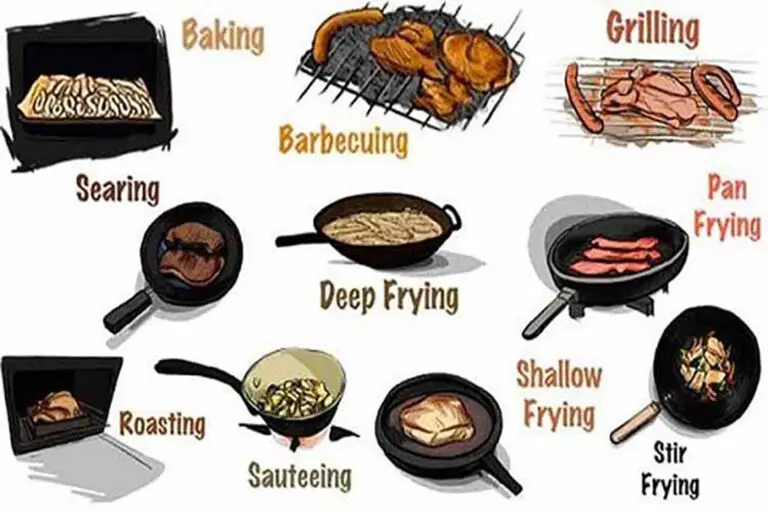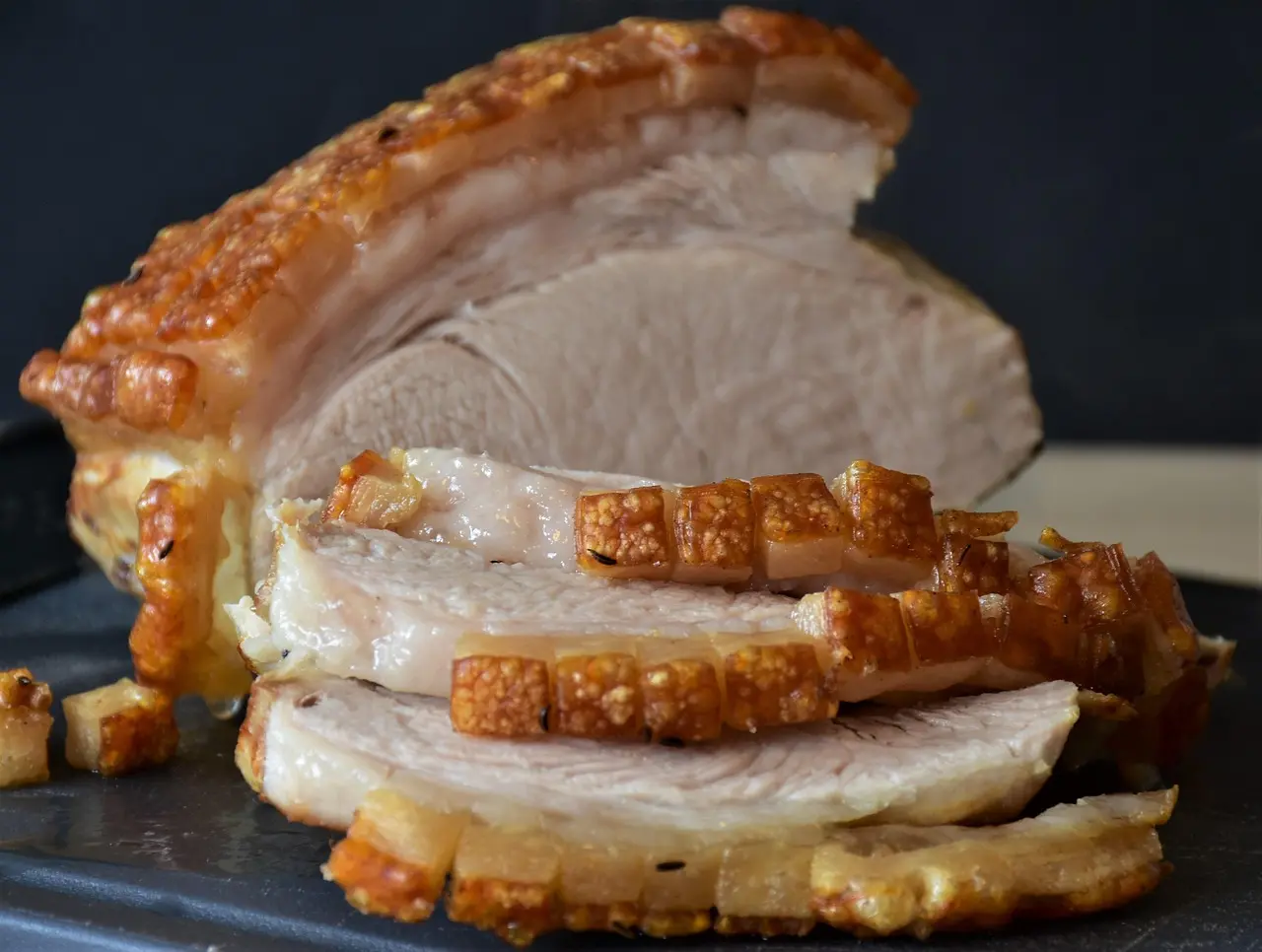
Temp For A Pork Tenderloin
Mastering the ideal internal doneness temp for a pork tenderloin is essential. Nobody wants dry tough meat. However, you don’t want to risk it on raw either. Dry undesirable results are a common problem for many who fear meat not being cooked enough. But fear not! A juicy, delicious turnout is within reach. Tenderloin on pork is a tasty cut. But, make no mistake it can easily be overcooked due to it being lean, and that is where many tend to fail. Cook it right, and it’s a winner. So, what’s the secret to a tender perfectly cooked result, you ask? Let’s dig a little deeper shall we?
Understanding This Cut Of Pork & Food Safety
Let’s get to know this cut of meat. What is tenderloin, exactly? Where does it come from? And how do we cook it safely?
What Is Pork Tenderloin & Where’s It Located?
The tenderloin is a long, narrow muscle. It is both a bone-in, and boneless cut of meat, and is found along the backbone of the pig. This cut is known for being very lean. Due to its low-fat property, it can easily dry out if overcooked. Tenderloin is also incredibly tender. When cooked properly, it practically melts in your mouth and is so delicious.
Safety Guidelines: Updated Temperatures
The USDA has strict safety guidelines. They want to help prevent food borne illness. So, the recommended internal done temp for a pork tenderloin is 145°F (63°C) – minimum. This ensures the meat is safe to eat. Previous advice suggested higher temps, but research shows 145°F is perfectly safe.
Why Temperature Matters
Temperature is everything when cooking meat. Heat affects the proteins inside. Too much heat, and they squeeze out moisture. This leads to dry, tough meat. Unsteady temperature fluctuations throughout the duration of a cook will also lead to dryness and toughness. That’s a no-no for pork. Steady temperatures help meat retain its moisture giving you tender, juicy results, and that’s the goal!
Resting and Slicing for Optimal Results
Resting and slicing are important. They affect the final result. Don’t skip these steps!
Why Resting is Crucial
Resting allows the juices to redistribute. When meat cooks, the juices move to the center. Resting lets them flow back outward. This results in juicier, more flavorful pork. It’s worth the wait.
How to Rest Pork Tenderloin
It all depends on how you’ve cooked it. A pro tip would be to give it time to rest first. Wait before slicing otherwise you’ll lose a significant amount of juices. You want them to reabsorb and redistribute before making your slices. This way they don’t release right away making for a juicier, more tender mouth full. For low and slow cooking or smoking you want to vent it first for a minute or two, then semi-loosely wrap it in foil letting it rest for about 10-15 minutes. With hotter and faster styles of cooking like grilling and roasting covering it loosely (tenting it with foil), as opposed to wrapping tightly will help it not to continue cooking. Instead, it will help keep it warm without steaming it, helping to keep the perfect internal temp for a pork tenderloin every time.
Slicing Techniques for Maximum Tenderness
Slice against the grain. This shortens the muscle fibers. It makes the pork easier to chew. Look closely at the meat. You’ll see the direction of the fibers. Cut across them.
Cooking Methods and Temperature Control
Different methods affect the temperature, and the final outcomes can all be different. Roasting, grilling, smoking, and pan-searing are all options. Let’s see how to control the heat with each.

Roasting Pork Tenderloin: Temperature and Time
Roasting is a reliable method. Preheat your oven to 400°F (200°C). Sear the tenderloin in a hot pan first. This gives it a nice crust. Then, roast it in the oven for 20-25 minutes. Cooking time will vary. It depends on the size of the tenderloin. Use your thermometer to check.
Grilling Pork Tenderloin: Achieving the Perfect Sear
Grilling adds char-grilled flavor. Use direct and indirect heat. Sear the pork over direct heat first. Get a nice char on all sides. Then, move it to indirect heat. Let it finish cooking more slowly. This prevents the outside from burning.
Pan-Searing Pork Tenderloin: A Quick and Easy Method
Pan-searing is fast and easy. Use a hot pan and some oil. Sear the pork on all sides until brown. Then, reduce the heat. Let it cook through. This method is great for a quick weeknight dinner.
Sous Vide Pork Tenderloin: Precision Cooking
Sous vide is super precise. It involves cooking the pork in a water bath. Set the temperature to 140°F (60°C). Cook for 1-4 hours. This ensures even cooking throughout. Then, sear it in a hot pan for a nice crust.
Smoking Pork Tenderloin: The Low & Slow Way
The smoking method is fun & adds to your overall flavor profile giving meat a nice smoky flavor. There are 2 different temperature guidelines with this style. Low & slow, which is considered to be between 225°F & 250°F, or “hot & fast” which is anywhere between 275°F & 325°F. Can take from 1 to 3 hours to finish with an IT of 145°F (63°C) to 160°F (71°C).
Achieving The Perfect Internal Temperature
Here’s how to hit that sweet spot. Temperature control is super important. We’ll cover thermometers and how to use them.
Recommended Internal Temperatures for Pork Tenderloin
To reiterate, aiming for 145°F (63°C) is key for medium-rare pork. This is the sweet spot for tenderness and safety. One thing we haven’t touched on yet is something known as “carryover cooking”. It happens after you remove meat from the heat and will continue to cook during its resting period. A good tactic to use is to take it off a little short from it being right at your desired internal temp by like 5 degrees. This way the carryover effect won’t take it out of your desired IT. After slow cooking or smoking wrap it in some foil and let it rest for about 10-15 minutes before slicing. For well-done pork, cook to a higher temperature. 160°F (71°C) is a good target for well done.
Using a Meat Thermometer: Types and Techniques
A digital meat thermometer is your best friend for monitoring temp. Digital thermometers give quick, accurate readings. Instant-read thermometers are fast and easy to use. However, those are a manual operation. Probe thermometers stay in the meat while it cooks. The best approach for using any of them is by inserting them into the thickest part. Avoid touching bone. Get an accurate reading.
Monitoring Temperature During Cooking
Don’t just guess! Keep a watchful eye on temperature. This helps you avoid overcooking. A good handheld meat thermometer probe can help you with this. Or if you like the hands-off approach a meat thermometer best for this would be something like a DigiQ DX3. After setting it up it will not only automatically monitor internal done temp for you, but will stoke your fire keeping it the most even and steady possible.
Troubleshooting Common Problems On Temp For A Pork Tenderloin
Mistakes can happen. Here’s how to fix them. We’ll cover overcooked, undercooked, and uneven cooking.
Overcooked Pork Tenderloin: Salvage Tips
Overcooked pork is dry. Slice it thinly. Serve it with a flavorful sauce. This can help add moisture. You can also use it in casseroles or stews.
Under-cooked Pork Tenderloin: What to Do
Most people know undercooked pork is not safe. It’s kind of a no-brainer actually, yet it’s understandable that some wouldn’t know this. I’ll be the first to say it’s not fun to learn about what might happen the hard way! There’s an easy fix for undercooked pork….just cook it longer. Put it back in the oven or pan. Continue cooking until it reaches 145°F (63°C) or more depending on your taste. This is where you’ll have to be more attentive until it’s done by checking it often. With a solid digital meat thermometer you wouldn’t have to though. The DigiQ DX3 would have gotten you there without any go back’s.
Uneven Cooking: Avoiding Hot Spots
Uneven cooking can happen. Consider using a reliable oven you have a decent amount of experience with. Rotating the tenderloin during cooking is a great practice. This helps distribute the heat for cooking as evenly as possible. Also, avoid overcrowding the pan.

Conclusion: Enjoy Perfectly Cooked Pork Every Time
Achieving the Ideal temp for a pork tenderloin isn’t difficult. Understanding internal temperatures is crucial. Using a meat thermometer is key in helping you gauge doneness and avoiding errors. Follow these tips and you’ll enjoy juicy, delicious meat every time. Experiment with methods and flavors. You’ll discover your favorite way to cook a tenderloin!


